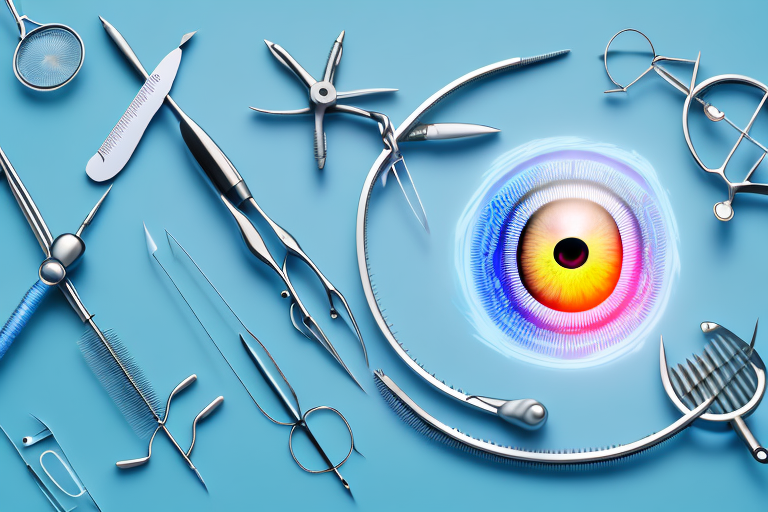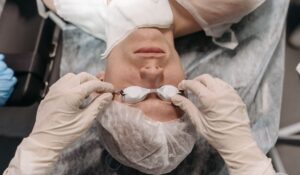Cataracts are a common vision problem that affect millions of people worldwide. As we age, the lenses of our eyes become cloudy, leading to blurred vision and difficulty seeing clearly. However, thanks to advancements in medical technology, there have been remarkable innovations in cataract surgery techniques that offer brighter tomorrows for patients seeking improved vision.
Understanding Cataracts and Their Impact on Vision
Before delving into the innovative techniques, it’s important to have a clear understanding of cataracts and how they affect vision. Cataracts occur when the proteins in the lens of the eye clump together, causing cloudiness. This cloudiness prevents light from properly passing through the lens, resulting in blurry or hazy vision. Over time, cataracts can significantly impact daily life and reduce the quality of vision.
It’s worth noting that cataracts are not limited to older individuals. They can also develop as a result of genetic factors or certain medical conditions. Regardless of the cause, cataract surgery is the most effective way to restore clear vision.
The Anatomy of the Eye and Cataracts
To fully grasp the implications of cataracts, it’s helpful to have a basic understanding of the eye’s anatomy. The lens of the eye is normally clear, allowing light to pass through and focus on the retina. However, as cataracts form, the lens becomes progressively clouded, impeding light from reaching the retina. This disruption in light transmission is what leads to vision problems and the need for surgical intervention.
Cataracts can affect different parts of the lens, resulting in various types of visual disturbances. Some individuals may experience difficulty seeing in low light conditions, while others may notice a decline in color perception. Understanding these variations allows surgeons to personalize treatment plans for each patient, ensuring the best possible outcome.
How Cataracts Affect Daily Life
Living with cataracts can significantly impact daily activities. Simple tasks, such as reading, driving, and recognizing faces, can become challenging. The loss of visual acuity can also affect overall quality of life, leading to feelings of frustration and dependency. Fortunately, advancements in cataract surgery techniques have revolutionized the treatment of this condition, offering hope and improved vision for those affected.
One of the most common challenges faced by individuals with cataracts is the difficulty in reading. As the cloudiness in the lens worsens, the text on a page becomes increasingly blurry and hard to decipher. This can make reading books, newspapers, or even menus at restaurants a frustrating experience. Many people find themselves squinting or holding reading materials at arm’s length in an attempt to bring the text into focus.
Driving is another activity that can be greatly affected by cataracts. The clouded lens makes it harder to see road signs, traffic lights, and other vehicles, which can pose a serious safety risk. Night driving becomes particularly challenging, as the glare from headlights can cause significant discomfort and reduce visibility even further. As a result, many individuals with cataracts find themselves limiting their driving or relying on others for transportation.
Recognizing faces is another aspect of daily life that can be impacted by cataracts. The cloudiness in the lens can make it difficult to see facial features clearly, leading to challenges in identifying familiar people. This can be particularly distressing in social situations, where individuals with cataracts may struggle to recognize friends, family members, or even their own reflection in the mirror.

Overall, cataracts can have a profound effect on an individual’s quality of life. The loss of clear vision can lead to feelings of frustration, isolation, and a decreased sense of independence. However, the advancements in cataract surgery techniques have brought new hope to those affected. With the ability to remove the clouded lens and replace it with a clear artificial lens, cataract surgery can restore clear vision and improve overall quality of life. Visit https://lasiksurgeryrx.com/can-diabetic-patients-go-for-cataract-surgery/ to read about Can diabetic patients go for cataract surgery?
The Evolution of Cataract Surgery
Cataract surgery has evolved significantly over the years, from traditional methods to the modern techniques used today. Understanding the advancements that have taken place helps to appreciate the state-of-the-art techniques being employed.
But how did cataract surgery begin? The history of cataract surgery dates back thousands of years. Ancient civilizations, such as the Egyptians and Greeks, attempted to treat cataracts by using sharp objects to push the clouded lens out of the field of vision. While these early attempts were crude and often resulted in severe complications, they laid the foundation for future advancements.
Traditional Cataract Surgery Methods
In the past, cataract surgery involved the manual removal of the clouded lens followed by the placement of a replacement lens. This procedure, known as extracapsular cataract extraction, required a large incision and the use of stitches to close it. While effective, this approach involved a longer recovery period and increased risk of complications.
Imagine undergoing cataract surgery in the early 20th century. The surgeon would make a large incision in your eye, carefully remove the cloudy lens, and then stitch up the incision. The recovery process would be lengthy, with patients experiencing discomfort and limited vision during the healing period.
Over time, a more refined technique emerged called phacoemulsification. This technique involves using ultrasound energy to break up the cataract into small pieces, which are then removed through a smaller incision. Phacoemulsification allowed for faster recovery times and reduced the risk of surgical complications, making it the preferred method for many surgeons.
As technology continued to advance, so did cataract surgery techniques. Microincision cataract surgery (MICS) became popular in the early 2000s. This technique further reduced the incision size, resulting in even faster recovery times and improved patient comfort. With MICS, patients could often resume their normal activities within a day or two after surgery.
The Shift Towards Modern Techniques
Building upon the success of phacoemulsification, modern cataract surgery techniques have taken patient outcomes to new heights. These techniques prioritize safety, precision, and overall visual quality.
Laser-assisted cataract surgery (LACS) is one such advancement. This technique utilizes a femtosecond laser to create precise incisions and fragment the cataract with exceptional accuracy. LACS also enables surgeons to tailor the procedure to each patient’s unique eye characteristics, resulting in optimized visual outcomes and enhanced safety.
But the advancements don’t stop there. In recent years, the use of intraocular lenses (IOLs) has revolutionized cataract surgery. These artificial lenses are implanted during the surgery to replace the clouded natural lens. IOLs come in various types, including monofocal, multifocal, and toric lenses, allowing surgeons to address not only cataracts but also other vision problems, such as astigmatism and presbyopia.
Additionally, the use of advanced imaging technology, such as optical coherence tomography (OCT), has improved the accuracy of preoperative measurements and surgical planning. Surgeons can now obtain detailed images of the eye’s structures, allowing for precise calculations and better outcomes.
As we look to the future, the field of cataract surgery continues to evolve. Researchers are exploring new techniques, such as the use of robotics and artificial intelligence, to further enhance surgical precision and patient outcomes. With each advancement, cataract surgery becomes safer, more effective, and more accessible to those in need.
The Advent of State-of-the-Art Techniques
Laser-Assisted Cataract Surgery
Laser-assisted cataract surgery (LACS) has revolutionized the way cataracts are treated. This groundbreaking technique involves using a femtosecond laser to assist in key steps of the surgery, such as creating the incision and breaking up the cataract. By using a laser, surgeons can achieve unparalleled precision, leading to better visual outcomes and improved patient satisfaction.
Furthermore, LACS allows for greater customization. Surgeons can precisely plan and execute each step of the procedure based on the patient’s individual eye anatomy. This personalized approach ensures that the intraocular lens (IOL) implantation is accurately positioned, leading to optimal vision correction.
In addition to its precision, LACS offers other benefits, such as reduced inflammation and faster recovery times. The use of a laser minimizes trauma to the surrounding tissues, leading to less inflammation and discomfort post-surgery. Patients often experience quicker visual recovery, allowing them to resume their normal activities sooner.
Advanced Intraocular Lens Implants
Another notable advancement in cataract surgery lies in the development of advanced intraocular lens (IOL) implants. These implants are designed to replace the clouded natural lens and restore clear vision. With traditional cataract surgery, the IOL used was a monofocal lens, which only provided clear vision at a single distance.
However, modern cataract surgery techniques now offer a range of IOL options tailored to each patient’s lifestyle and visual needs. Some examples include multifocal lenses, which provide clear vision at multiple distances, and toric lenses, which help correct astigmatism. These advancements in IOL technology allow for improved vision quality and reduced dependence on glasses or contact lenses for many patients. By clicking here you can also read about The role of management in providing safe eye care delivery.
The Benefits of Modern Cataract Surgery Techniques
Improved Vision Quality
One of the primary objectives of modern cataract surgery techniques is to improve vision quality. By utilizing advanced surgical tools and cutting-edge technology, surgeons can achieve remarkable outcomes for their patients. Whether through the precision of laser-assisted surgery or the use of advanced IOLs, the goal is to restore clear vision and enhance overall visual acuity.
With the ability to customize the procedure and select the most appropriate IOL for each patient, visual outcomes are often more precise and tailored to individual needs. This improved vision quality can have a profound impact on daily life, allowing individuals with cataracts to regain their independence and engage in activities with greater confidence.
Faster Recovery Times
Thanks to the advancements in cataract surgery techniques, recovery times have become significantly shorter. Older methods often required weeks of healing before patients could resume their normal activities. However, with modern techniques, patients can often return to their routine within a few days.
Laser-assisted cataract surgery, in particular, offers reduced inflammation and faster healing. The precision of the laser minimizes trauma to the eye, leading to less postoperative discomfort and a quicker recovery process. Patients can experience improved vision sooner, allowing them to get back to their daily lives faster than ever before.The Future of Cataract Surgery
Emerging Technologies in Cataract Surgery
The advancements in cataract surgery techniques are an ongoing journey, with researchers and surgeons constantly exploring new technologies and innovations. One area that shows promise is the use of artificial intelligence (AI) in eye surgery. AI has the potential to assist surgeons in making more accurate diagnoses, planning surgical procedures, and predicting patient outcomes. By harnessing the power of AI, cataract surgery could become more precise, efficient, and tailored to individual patient needs.
The Role of Artificial Intelligence in Eye Surgery
Artificial intelligence has the ability to analyze vast amounts of data and identify patterns and trends that may not be easily noticeable to the human eye. In cataract surgery, AI can be used in preoperative evaluation, selecting the most appropriate IOL for each patient, and predicting surgical outcomes based on patient characteristics and eye measurements.
By integrating AI into cataract surgery, clinicians can enhance surgical planning and decision-making. This technology has the potential to improve patient outcomes, optimize visual results, and further refine state-of-the-art cataract surgery techniques.
Cataract Surgery: A Bright Future
In conclusion, cataract surgery has come a long way, thanks to ongoing innovations in surgical techniques and technologies. From traditional methods like extracapsular cataract extraction to the more advanced laser-assisted surgery and personalized IOL implants, patients now have access to state-of-the-art techniques that offer brighter tomorrows.
As we look ahead, the future of cataract surgery holds even more promise. Emerging technologies, such as artificial intelligence, have the potential to transform the field and further improve patient outcomes. With continuous advancements, cataract surgery will continue to pave the way for better vision and improved quality of life for millions of people worldwide.



